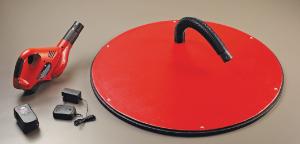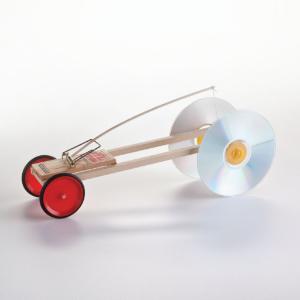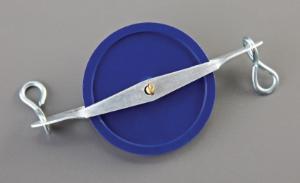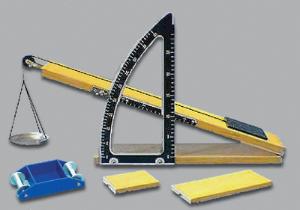Hovercrafts Aren't Just Science Friction with this Activity
Elementary/Middle School
Marty McFly, in the classic movie "Back to the Future II," dazzled us with his fictitious hovering skateboard.
The tabletop scientists in your classroom will get a rise out of building a real-life hovercraft of their own. By building a tabletop hovercraft, students explore the fundamental scientific principles behind gravity, air resistance, and friction.
But let's pump the brakes for a moment and look at the science behind this gravity-defying machine.
Slowing things down—the science of friction
Friction is a force that happens when things rub against each other (with opposing motion). Friction can slow things down—like a brake pedal pressing against moving wheels. Different objects have different amounts of friction when they rub together. Rough surfaces or heavy objects have more friction between them than smooth surfaces or light objects. When surfaces do not rub against each other, there is no friction between them. So, if you need to reduce friction between two surfaces, make sure they don't touch. Engineers can also reduce friction by creating some degree of separation of surfaces by
- making the surfaces smooth by polishing,
- applying lubricants (like oil or grease) to the rubbing surface,
- using wheels to move objects, or
- using ball bearings between the moving parts, for example.
Resistance is futile—liquids and gases
Friction only happens with solid objects, but there is resistance to motion in both liquids and gases. The movement of liquid and gas doesn't involve sliding surfaces like friction does, but is instead the resistance you get if you try to push your way through a crowd of people. Liquids and gases are colliding, not sliding! This force has many names, all really meaning the same thing: viscous force, drag force, fluid resistance. If the gas is air, we call it air (or wind) resistance.
In 1955, British inventor and engineer Christopher Cockerell used the principles of friction and air resistance to invent the first real hovercraft — a vehicle that can travel on a cushion of air over water, ice, dirt, pavement, and other surfaces.
In this activity, students gain first-hand experience of how friction and air resistance affect motion. They build a hovercraft using air from balloons to levitate a craft made from compact discs (CD) and watch it slide across a surface.
If you're ready to put the pedal to the metal, download the activity to get started.
Recommended Products:
[StartProductBlock]

Newton's Hovercraft
The craft can ride on a cushion of air and experience near-frictionless motion. The 40" wide hovercraft is easy to use, and it doesn't need an air track. Teachers can demonstrate action and reaction on a large-scale. Students observe Newton's Laws in action
[EndProductBlock]
[StartProductBlock]

Ward's® Vehicle Kit
With this STEM-based project kit that meets Next Generation Science Standards (NGSS), students will design and build cutting edge vehicles to investigate stored energy from sources such as rubber bands or mousetraps.
[EndProductBlock]
[StartProductBlock]

Air Cushion Table
Illustrate the thermal motion of atoms and molecules in various states of aggregation, electrical conduction processes, models of atomic physics, and mechanical motion. The air-cushion principle, and the use of magnetic forces, allows objects to hover in a nearly zero-friction state
[EndProductBlock]
[StartProductBlock]

Friction on an Inclined Plane
This set demonstrates a wide variety of physical science topics, including the resolution of forces on an inclined plane, kinetic and potential energies, uniform and accelerated motions, and the friction between two surfaces.
[EndProductBlock]
